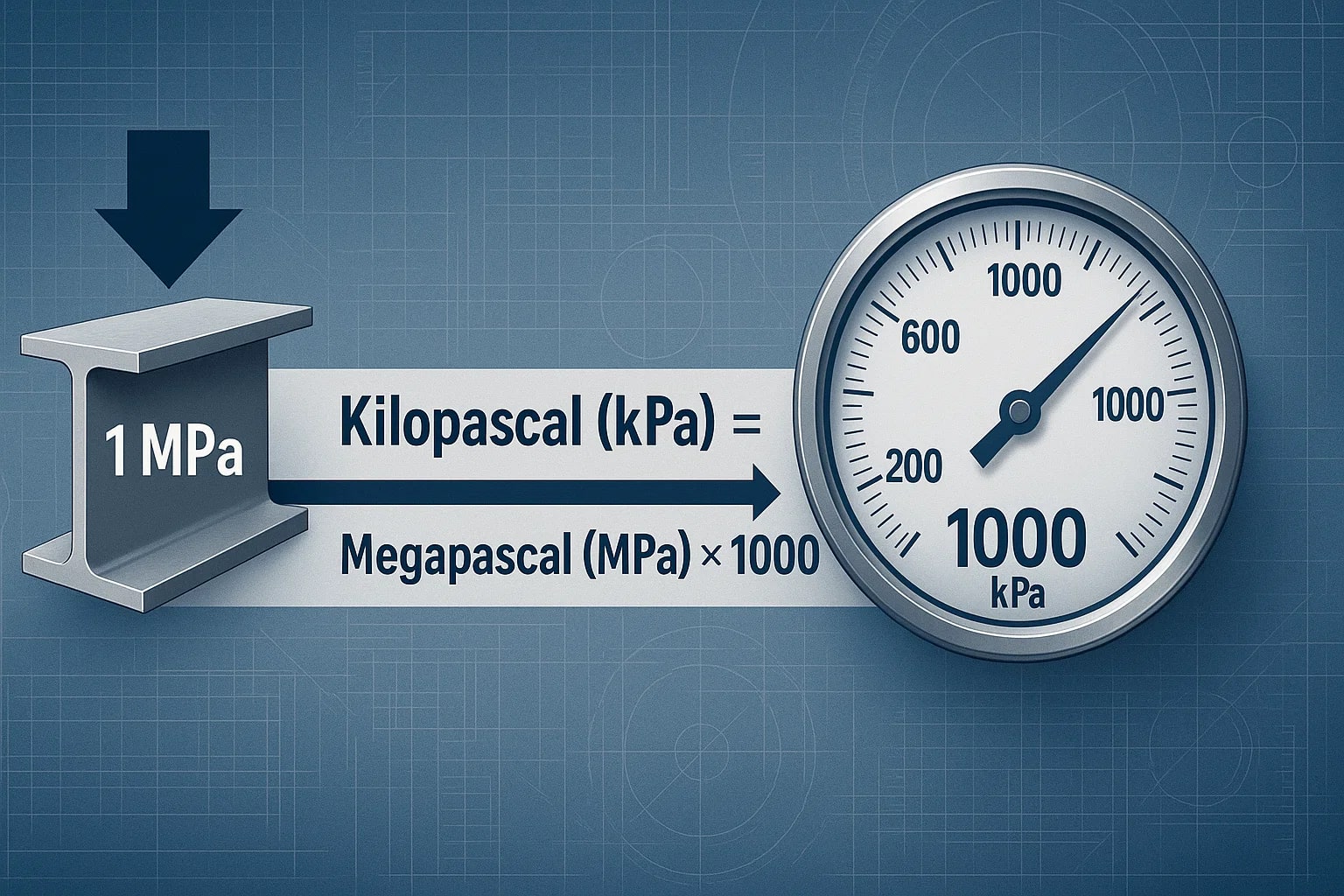megapascal to kilopascal – How to convert MPa to kPa
Pressure is a critical factor in engineering, physics, and material science. The megapascal (MPa) is suited for high-pressure values, while the kilopascal (kPa) is more common in meteorology, hydraulics, and day-to-day technical use. Converting megapascal to kilopascal allows engineers and scientists to shift between macro and micro scales of measurement with ease.
What is a megapascal (MPa)?
A megapascal equals one million pascals, or one million newtons per square meter. It is often used in fields such as civil engineering, hydraulics, and material testing, especially when dealing with strong forces.
What is a kilopascal (kPa)?
A kilopascal equals 1,000 pascals. It is widely used in meteorology (to describe atmospheric pressure), medicine (blood pressure), and technical industries where smaller, more manageable numbers are preferred.
How to convert megapascal to kilopascal
Kilopascal (kPa) = Megapascal (MPa) × 1000
Example:Kilopascal = 2 MPa × 1000 = 2000 kPa

If you’d like instant answers, the Conversion Tools provide quick results. For related needs, you can also check the Speed Converter.
Do you know?
-
About megapascal: Hydraulic excavators often operate at 20–30 MPa, powerful enough to lift tons of earth in seconds.
-
About kilopascal: Standard atmospheric pressure at sea level is 101.3 kPa, the baseline for weather forecasts and aviation altimeters.
The Sydney Harbour Bridge and Pressure Calculations
When building the Sydney Harbour Bridge in the 1930s, engineers had to calculate the strength of steel under immense pressure. In technical documents, stress values were recorded in MPa for accuracy. But for field engineers and construction teams, values were often converted into kPa to make readings more relatable and easier to compare with familiar standards like atmospheric pressure.
This mix of MPa and kPa ensured that everyone — from designers in offices to workers on site — understood the forces at play. It was a vital step in building one of the world’s largest steel arch bridges, which still stands strong today.

Scaling Pressure for Clarity
Converting megapascal to kilopascal is simple — multiply by 1000. But the real value lies in communication: large-scale projects need the precision of MPa, while practical industries rely on the accessibility of kPa. From massive bridges to weather charts, this conversion keeps information clear across different contexts.

